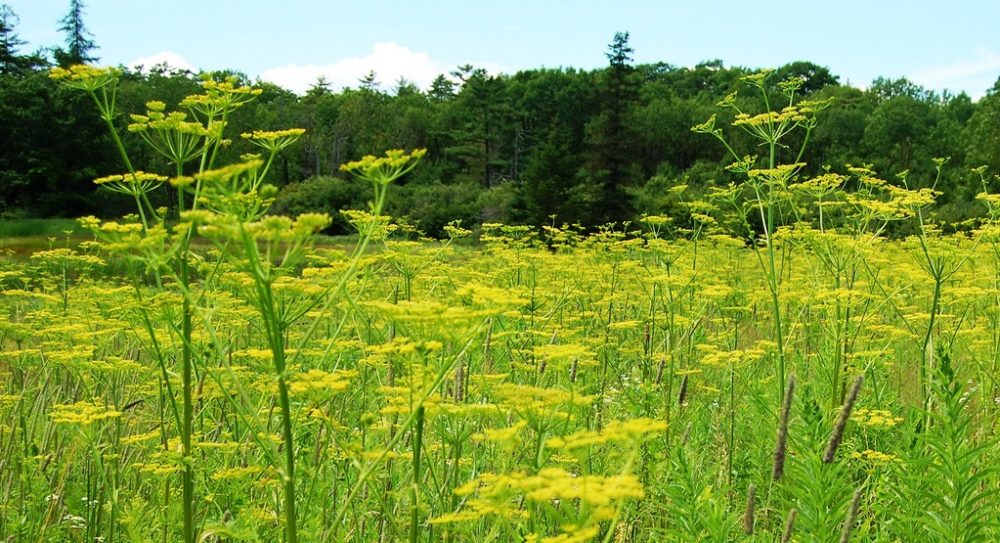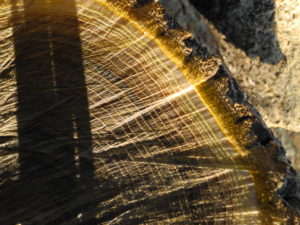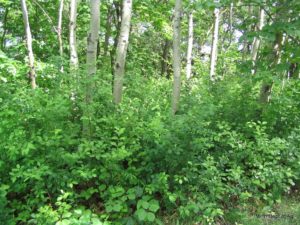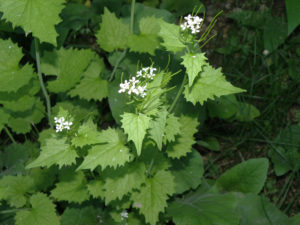
Wild parsnip
There are a couple of new, troublesome, plant species that have emerged on the scene in Minnesota recently. Unfortunately, they are just the latest in a long and growing list of such plants.
We humans have been introducing plant species to new parts of the world for quite a while, to the point where nearly every corner of the globe now contains a number of non-native plant species (also known as “exotic” plants).
If a non-native plant remains confined to our flowerbeds or gardens, it may be relatively harmless. However, non-native plants that spread, produce lots of seed, or are otherwise difficult to control can be a serious threat to native habitats. These plants are referred to as “invasive” plant species.
There’s a pretty long list of invasive plants that Minnesotans have been fighting for decades, and that list keeps getting longer thanks to global agriculture and horticulture trade, and compounded by climate change. The MN Department of Agriculture and the MN Department of Natural Resources, combined, recognize 60 different plant species as “noxious” or “invasive.”
An invasive plant species growing in its homeland may be relatively harmless because it is kept in check by the surrounding native plants and animals that evolved ways of competing with it over many millennia. That same plant growing in a place where it is not native, is no longer held in check by its native competitors and may be able to spread aggressively as a result.
Urban homeowners with lawns should be ever-vigilant for invasive plants like creeping Charlie, birdsfoot trefoil, and oxeye daisy. Plants like creeping Charlie and birdsfoot trefoil may look harmless with their short stature and attractive flowers, but anyone who has battled them can attest to their amazing ability to spread and take over large tracts of lawn.
Landowners who manage larger areas including natural habitats like woodlands and grasslands have a much greater list of invasive plants to worry about.
Landowners with grasslands need to watch out for species like smooth brome, Kentucky bluegrass, Canada thistle, Reed’s canarygrass, hoary alyssum, multiflora rose, Queen-Anne’s lace, sweet clovers wild parsnip, and others. Smooth brome (Bromus inermis) and Kentucky bluegrass (Poa pratensis) are particular problems in grasslands, as they are aggressive, cool-season grasses that spreads quickly and are challenging to control. Originally from the region of China and Mongolia, smooth brome found its way to the new world at least a century ago in horse feed, and has spread so successfully that it is usually the grass you see in road ditches as you drive through the countryside.
In the autumn of 2016, a new grassland invasive, Palmer’s Amaranth, showed up unexpectedly in tallgrass prairie restoration projects in western Minnesota and has already taken a great deal of resources. See the Palmer Amaranth article in this issue for more information about this new threat.
Woodland landowners should watch out for plants like European buckthorn, amur maple, exotic honeysuckles, garlic mustard, leafy spurge, oriental bittersweet, Siberian elm and others. European buckthorn (Rhamnus cathartica) is one of the greatest threats to native woodlands in our regions. As the name implies, it is from Europe, and is particularly successful at spreading through native woodlands due in part to its ability to leaf out very early in the spring and hold its leaves very late in the fall.
In the growing season of 2016, a new woodland invasive species was found scattered throughout the woods of Linnaeus Arboretum. It was identified as a non-native plant called Amur corktree. A call to the Minnesota DNR Forestry Division prompted some informal surveys of woodlands in Mankato in which more Amur cork tree was found.
Linnaeus Arboretum has been taking steps in recent years to be vigilant in finding and removing these and other unwelcome plant species through a variety of management tools.
Landowners concerned about invasive plant species should follow some simple steps. First, educate yourself on how to identify the dominant plants growing on your land. Next, do some simple walking surveys during the growing season. You can’t know if you have a problem until you can identify what’s growing on your land. Then, depending on the extent of your invasive plant problem, you should consult a natural resource professional to formulate a management plan. Invasive plant control management tools range from hand-pulling to chemical spraying to the use of controlled burns, and agencies like the Minnesota DNR, Minnesota Department of Agriculture, and the University of MN Extension Service can be very useful in pointing you in the right direction.
Scott Moeller, Naturalist and Director



Great information for people to have. The wild parsnip is already showing up along MN 99 in Le Sueur County. It’s a horror further to the southeast. People attempting to eradicate it should be aware of the blistering that can come from the combination of its sap and sunlight on the skin, but it’s definitely something that should be fought.